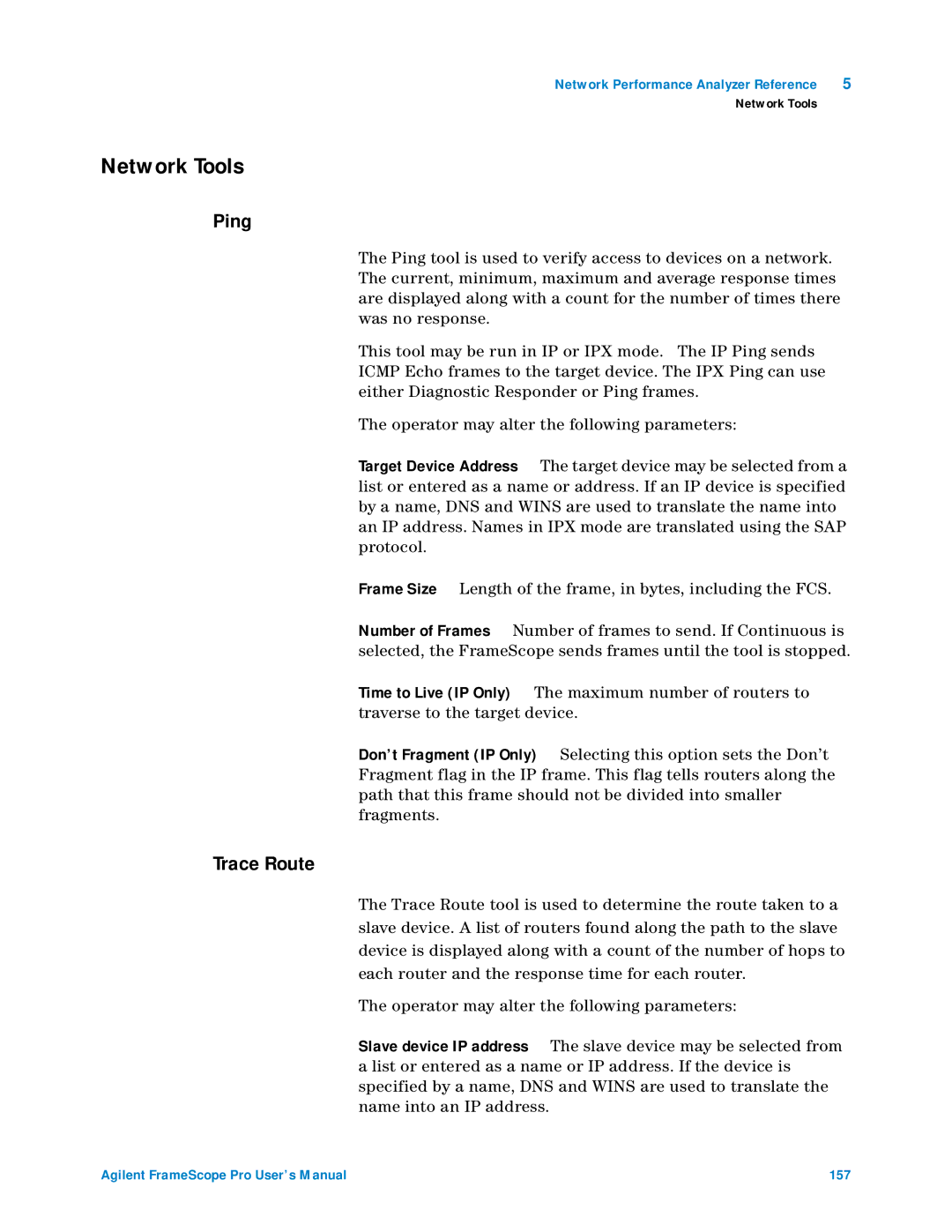Network Performance Analyzer Reference | 5 |
Network Tools
Network Tools
Ping
The Ping tool is used to verify access to devices on a network. The current, minimum, maximum and average response times are displayed along with a count for the number of times there was no response.
This tool may be run in IP or IPX mode. The IP Ping sends ICMP Echo frames to the target device. The IPX Ping can use either Diagnostic Responder or Ping frames.
The operator may alter the following parameters:
Target Device Address The target device may be selected from a list or entered as a name or address. If an IP device is specified by a name, DNS and WINS are used to translate the name into an IP address. Names in IPX mode are translated using the SAP protocol.
Frame Size Length of the frame, in bytes, including the FCS.
Number of Frames Number of frames to send. If Continuous is selected, the FrameScope sends frames until the tool is stopped.
Time to Live (IP Only) The maximum number of routers to traverse to the target device.
Don’t Fragment (IP Only) Selecting this option sets the Don’t Fragment flag in the IP frame. This flag tells routers along the path that this frame should not be divided into smaller fragments.
Trace Route
The Trace Route tool is used to determine the route taken to a slave device. A list of routers found along the path to the slave device is displayed along with a count of the number of hops to each router and the response time for each router.
The operator may alter the following parameters:
Slave device IP address The slave device may be selected from a list or entered as a name or IP address. If the device is specified by a name, DNS and WINS are used to translate the name into an IP address.
Agilent FrameScope Pro User’s Manual | 157 |
